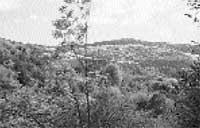Introduction to new technologies: Introduction to paper in Hego Euskal Herria (1755-1842)
1995/03/01 Zaldua Gonzalez, Iban Iturria: Elhuyar aldizkaria
In the following centuries paper manufacturing techniques were transferred from Spain to other European regions, with the use of water force in the residences where this product was manufactured. Thus the paper mill emerged (see figure 1). From then on, until the Industrial Revolution, it was the productive unit of this product.
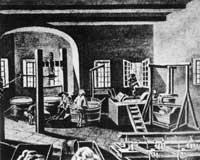
In this work we would like to touch on the following points: on the one hand, the first paper mills in Hego Euskal Herria, XVIII. and XIX. the context in which they were established for centuries; on the other hand, how it happened and what kind of technology was imported; and finally, the difficulties that this activity had to consolidate among us in the beginning. Currently, XX. At the end of the 20th century, we are in a process of crisis and change of Basque industry, and perhaps it would not be foolish to look at the past and analyze times similar to those of our history. One of those times was the XVIII. It was one of the last decades of the nineteenth century and one of the first of the nineteenth century, so we consider it interesting to analyze the topic of paper.
XVIII. Until the mid-twentieth century no paper mills were launched in Hego Euskal Herria. In the North Basque Country there were already a few, created by the growth dynamics of important paper centres in the French southwest. The first of Hego Euskal Herria dates from 1755, built in an old gunpowder factory of the General Hospital of Pamplona; the first of Bizkaia, Berriz, went to work in 1779 and that of Gipuzkoa in 1803, in Alegia. From then until 1842, when the first modern factory was established, several efforts were made in these three provinces to establish manual paper.
All this took place in a concrete context, in the time of crisis of the Old Regime in which the economic, social and political level occurred. In the economic sphere, the most outstanding features of this crisis were the cycle of population and agricultural growth declines, the decline of naval and commercial activities and the beginning of the failure of traditional steel. These problems, as is known, generated great instability in the field of social relations, which together with other factors are at the basis of the Carlist explosion. But what interests us most is the “industrial” crisis, the crisis of iron and steel. This activity was of great importance in Bizkaia and other provinces. For these relatively poor regions at the agricultural level, steel was, among others, one of the tools used to balance the market balance.
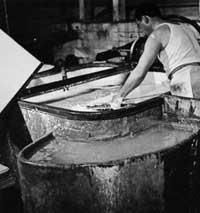
XVIII. At the end of the 20th century, however, the crisis of this activity began. XV. Although iron blast furnaces have been developed in other European regions since the 19th century, Basque steel industry remained linked to the direct system, losing international competition, especially the 18th century. Inventions that were occurring in England throughout the 20th century. In addition, the policy of the Spanish Crown against Basque manufactured products under the pretext of smuggling affected the sale of Basque iron. At the end of the century, the loss of the American colonies further affected traditional iron ore.
The beginnings of the paper industry in Hego Euskal Herria should be placed in this context. Until then, the abundance of ironworks hindered the expansion of other “industrial” activities: remembering that the ironworks “monopolized” (together with the essential mills for the grinding of the grain) the banks of the rivers; that is, the location of the other activities that should use the same energy source (water force).
The paper industry, as we have said, was very much related to the use of water, not only because its strength was intended (to operate pasta machines), but also because water was, along with the rag, the main raw material of this activity. Remember that wood began to be used later; XIX. the second half of the twentieth century. The traditional way for the manufacture of paper consisted, in short, in obtaining pasta from the rinsing of the remains of tissues formed by vegetable fibers (rags: bites, cotton...); later a specialized operator removed the paste from a pile and removed some of the leftover water by stirring in a mold or mesh, forming a sheet of paper (see figure 2), which after being crushed under the press, was cast.
The manual stationery did not need too much space and there are many “remodels” of the headquarters that were attached to other activities. The old ironworks are numerous, especially in Bizkaia: cite that of Berriz, Zalla (1782), Etxebarria (1830), Basauri (1848), etc. ; also old mills: Igarondo de Tolosa (1818), probably from Abando (1824); that of Pamplona, as has been said, was a polvorin factory; that of Aoiz (1773) was an old worker.
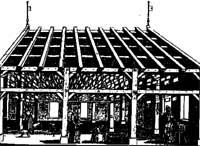
On the other hand, there is no shortage of those adapted to the new constructions, such as that of Legazpi (1805). In fact, it could be a business with a low initial relative cost. The technical changes that were to be made in the ironworks or mill were small. Our region also had formative advantages, since many workers in the area knew how to use and build similar mechanisms. From the point of view of human capital, at least in part, Euskal Herria was well equipped for the implementation of paper.
The decline of traditional steel, however, is not enough to explain the efforts made to boost the paper industry. The premise is important, of course, because the force of the water of the rivers began to be “liberated” for other activities and because some ferry owners, faced with the crisis, tried to seek new uses for their headquarters, as evidenced by the case of the first two mills from Bizkaia. But there are other factors to consider. It cannot be denied that this first breath of the paper industry in Hego Euskal Herria can be placed in the reproduction environment of paper mills that was being produced in many Spanish regions. Crown by different decrees, at least XVIII. From the middle of the 20th century it was attempted to promote the role.
Although there is no concrete data, paper production noted an increase in demand: let us remember that it was the Century of Lights and that the number of publications of all kinds increased considerably, while trade growth increased demand for foil and cardboard for packaging. The impulse of the signage and the cigar shop that used these topics was also indisputable in the XVIII. and XIX. for centuries. But it must also be borne in mind that the paperwork techniques, in general, came from the north, that is, from France and Iparralde: the itinerant tradition of the French papermakers is known.
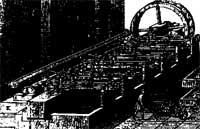
Therefore, as has been said, the paper industry first met in Zuberoa and Baja Navarra, and later in Hegoalde. Remember that at that time, by the foral system, these provinces constituted a space for the Libyan, with very close relations with the countries of the North. This certainly facilitated the introduction of “new” technology, taking into account that at that time know-how was extended alongside a skilled worker; this pre-industrial trend did not lose strength until industrialization was very advanced.
Along with all this, it is worth mentioning the initiative of the Real Sociedad Bascongada de Amigos del País, with the aim of restoring the economic structure of Euskal Herria, giving great importance to the development of the secondary sector: the modernization of the steel industry, for example, was one of its main objectives. It also sought to promote new activities, including the paper industry. Already in 1771 it was proposed the creation of a trash can in Bilbao. The Royal Society of Friends of the Country was directly related to at least the first effort of Bizkaia: The head of the paper mill of Berriz was named Friend "Benemerito", whose daughter was awarded the silver medal of the Association for the network elaborated by her daughter.
However, this first impulse of the Basque role was not so successful. In Gipuzkoa, for example, of the five attempts made between 1803 and 1841, only two of them had a close and difficult follow-up. Something similar happened in Bizkaia: although at least four projects were launched, only one remained. Most paper mills worked for a few years and were closed immediately. Incidents, references to difficulties, complaints for lack of profitability, etc. quite abundant.
The paper sector was not consolidated, at least in Gipuzkoa, until the industrialization of the activity or perhaps for giving a more prudent date until the 1860s. If we have seen positive factors before, we should also highlight the pessimistic conditions that had a great weight. One of them would be the aforementioned situation of Libreganism. In Hego Euskal Herria many products were imported, including paper. These imports come from long-established paper centres. An activity that existed in “childhood” could act little, in price and quality, against these imports, without the support of a tariff.
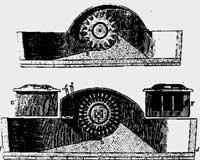
The problem was not only to sell the paper that the French and Dutch introduced in the South without paying taxes, but to export the main raw material, the rag, without any impediment, while it was forbidden to remove the rag from Spain (that's why a Tolosa stationary was a drawer). In addition, the Basque role was taken as a foreigner when passing the Ebro customs and, therefore, when entering Spain, as was the case with iron, it had to pay the tariff to the detriment of competition. Therefore, it is no wonder that the owners of the Abando Mill claim the privilege of smoking for the production of their new straw products as a way to somehow overcome these market limits.
But these institutional factors are not enough to analyze the difficulties of the first paper industry. It can also be thought that there were technological barriers. It does not seem, for example, that, at first, it was the latest technology that was introduced. Before devising and developing a continuous paper production machine (XIX. Since the first decade of the 20th century, the only technological advance applied in the paper industry occurred in the process of cloth reduction, which was previously carried out through the hammers system (see Figure 4), XVII. Starting in the second half of the 20th century it began to be manufactured with a faster “Dutch pile” (see figure 5), although this invention spread slowly.
When the paper industry began to enter Hego Euskal Herria the “Dutch pile” was known, but in the first paper mills installed here it seems that the old hammer system was still used, which probably increased the cost of Basque products: According to the French author La Lande, the work carried out by the “Dutch pile” was done in 8-10 hours, with hammers in 24-30 hours. However, in the factories implanted from the 1820s, the “Dutch pile” became increasingly common. As for the dissemination of technological knowledge, there were also other difficulties. While it was quite easy to attract the French who worked in the paper industry (most of the Basque paper mills began to work under the responsibility of the French workers and teachers who taught trade to the locals), conflicts and problems were sometimes caused by the ignorance of the trade by these workers or by the demand for excessively high wages.
Another factor to highlight is that of wars: In the South, between 1794 and 1839 there were three wars (that of the Convention, that of the Independence and the 1st Carlist war), which were undoubtedly harmful to the “industry”. The market contracted and we know that in those wars at least one paper mill was burned. We cannot forget, moreover, that the first wars were provoked by the development of relations with the French, which perhaps also had to do with the aforementioned conflicts.
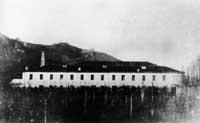
In 1842 the first continuous paper bin in the Basque Country, LA ESPERANZA (see), was launched in Toulouse. Soon new factories were built in Villava and Irura. It was the beginning of the industrial era of the paper industry, a history better known than what we have exposed here. This does not mean that the paper mills that were created and left in the first attempt disappeared immediately, but that new mills that still manufactured paper by hand would be founded. But compared to the previous epoch, we plunged into a process of clear growth, especially in Gipuzkoa.
The institutional bases, such as the coastal comparison of customs of 1841, and technological ones were very different. In fact, in this new stage we will find few entrepreneurs linked to the first impulse of the paper industry that we have tried to clarify: the new industrialists would have to face different problems. We wanted to highlight the diversity of the time of change. Now we are also in economic crisis, some speak of the process of deindustrialization. The monocolic explanations of the crises are not enough, as we have seen here. Much less one-way solutions. If the relative failure of these first historical efforts in the implementation of the role demonstrates that we must take into account all kinds of factors (economic and technological, but also institutional and environmental policy).

Gai honi buruzko eduki gehiago
Elhuyarrek garatutako teknologia




